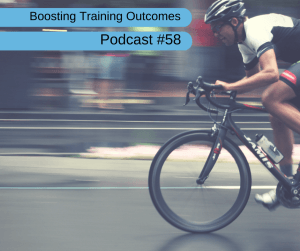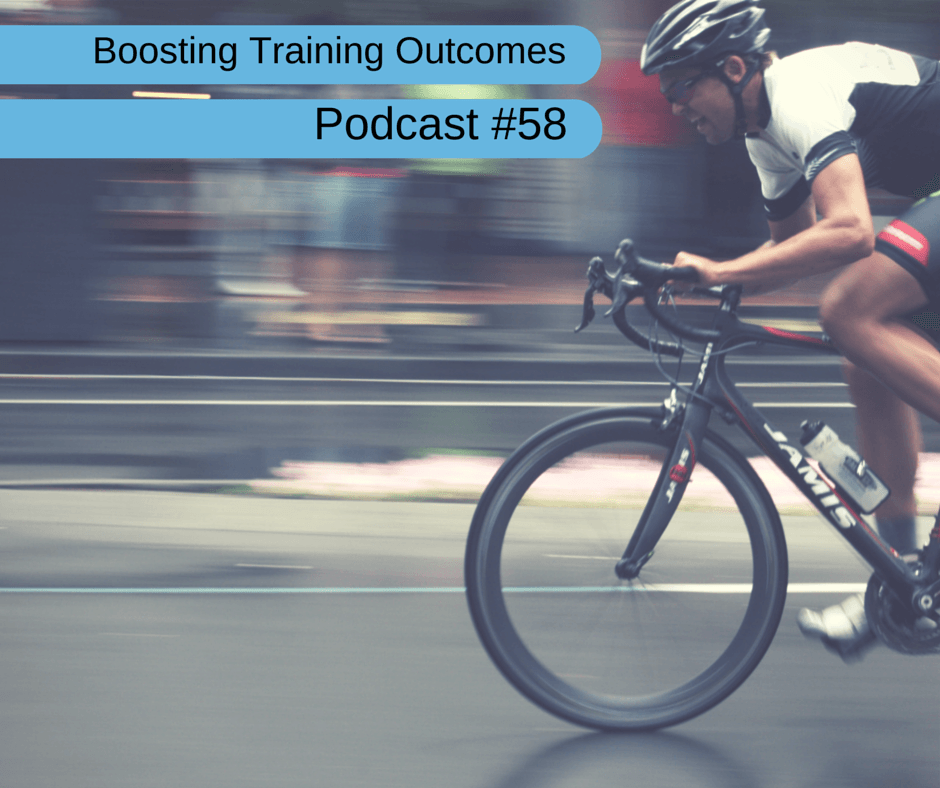This time of year, the focus of your questions has turned from how to get strong and fit for upcoming events to wringing the most out of your training time. If you are anything like the 99% of cyclists for whom riding a bike isn't a job, you have limited time to train and need to get the most out of each hour. I'll wager that these questions that I'm getting will apply to many of you out there. It's true that no question is a stupid one, and since there's a lot of valuable information in each of the topics I'll talk about, I've put them together into a podcast intended to help you boost your training outcomes.
In this episode of the Tailwind Coaching Podcast, I'll explain how you can boost your fitness and increase your training outcomes with some simple techniques. After the jump, you'll be able to peruse the show notes and read a synopsis of what's talked about in this episode.
Don't forget to hit the like and share buttons on the left to share this information with your friend, group ride buddies and teammates!
Now, learn how to boost your training outcomes with these simple tips:
Podcast: Play in new window | Download (Duration: 1:11:08 — 130.3MB)
Subscribe: RSS
 Show Notes:
Show Notes:
- Single leg drills – Designed to build neuromuscular coordination and overall efficiency, muscle contraction coordination, cadence development.
- Muscular Endurance (ME) Drills – Note designed to make you a masher, but builds neuromuscular coordination, efficiency and fatigue resistance. Increased neuromuscular fatigue resistance, increases resistance to cramping, allows for longer, harder rides.
- Training Tip: Do single leg drills on the trainer, high cadence work and “alternate leg drills” outdoors. Add ME during any part of your ride (best on false flats) where you ride under high pedal tension. Pay attention to foot position to recruit different muscle groups. For more specific training, check out my Base Module and Advanced Base Module
- Changing cassettes with cranksets – As a general rule, increase the ring size, increase the cassette range. Decrease the ring size, decrease the cassette range. Change cranksets while leaving the cassette for climbing or flats.
- Training Tip: Select gearing you can roll at +/- 30 RPM of your sweetspot cadence, and one you can climb an 8% grade at sweet spot cadence with a cassette cog or two to spare for bailout situations. To help you push those bigger gears, work on building strength and fitness with my build and advanced build modules, and my raw strength module in the off season.
- Starting fasted training – Start easy with one fasted training day/week. Easy day only. After 2-3 months of 1x/week fasted training, switch fasted day to a short, hard day. Continue to add time to hard day. After a couple months, add a 2nd weekly day.
- Training Tip: always carry some food with you during the fasted days to ensure you don't bonk badly. Don't start out going hard on your fasted days or you will bonk hard. Fasted training is designed to increase your metabolic efficiency and increase your ability to burn fats for fuel, sparing glucose/glycogen for hard efforts (see my podcast on fat, fasting and training adaptation.)
- CTL increase, fitness/form/fatigue – CTL is the numerical measure of your fitness. ATL is how fatigued you are from your current training. TSB is how “fresh” or “on form” you are. CTL can be thought of as “how long you can go hard” and it relates to your Functional Threshold Power as FTP is “how hard you can go.”
- Training Tip: TSB can be used to try and set you up for a good performance. By reviewing your past high quality performances and correlating TSB with them (and other factors you should be detailing in your training logs) you can set the stage for a great race, fondo, group ride, etc.
- Cramping and how to prevent it – Cramps are not totally understood, but it seems thought that they are a breakdown of neurological elements in the muscle itself. This study in Sports Med (1996 Jun;21(6):409-20.) explains some of the theoretical causes of muscle cramps. Note that they do not generally see cramping as a mineral deficiency issue (your body is designed to tightly regulate electrolyte imbalances, despite what the Gatorade people will lead you to believe.)
- Training Tip: Don't neglect the importance of stretching (post-activity) and ensure adequate conditioning for your chosen goals. That typically means ME work and neuromuscular coordination work to increase the resistance of the nervous system and muscles to cramping.
Here's the abstract mentioned in the podcast:
Muscle cramp is a common, painful, physiological disturbance of skeletal muscle. Many athletes are regularly frustrated by exercise-induced muscle cramp yet the pathogenesis remains speculative with little scientific research on the subject. This has resulted in a perpetuation of myths as to the cause and treatment of it. There is a need for scientifically based protocols for the management of athletes who suffer exercise-related muscle cramp. This article reviews the literature and neurophysiology of muscle cramp occurring during exercise. Disturbances at various levels of the central and peripheral nervous system and skeletal muscle are likely to be involved in the mechanism of cramp and may explain the diverse range of conditions in which cramp occurs. The activity of the motor neuron is subject to a multitude of influences including peripheral receptor sensory input, spinal reflexes, inhibitory interneurons in the spinal cord, synaptic and neurotransmitter modulation and descending CNS input. The muscle spindle and golgi tendon organ proprioceptors are fundamental to the control of muscle length and tone and the maintenance of posture. Disturbance in the activity of these receptors may occur through faulty posture, shortened muscle length, intense exercise and exercise to fatigue, resulting in increased motor neuron activity and motor unit recruitment. The relaxation phase of muscle contraction is prolonged in a fatigued muscle, raising the likelihood of fused summation of action potentials if motor neuron activity delivers a sustained high firing frequency. Treatment of cramp is directed at reducing muscle spindle and motor neuron activity by reflex inhibition and afferent stimulation. There are no proven strategies for the prevention of exercise-induced muscle cramp but regular muscle stretching using post-isometric relaxation techniques, correction of muscle balance and posture, adequate conditioning for the activity, mental preparation for competition and avoiding provocative drugs may be beneficial. Other strategies such as incorporating plyometrics or eccentric muscle strengthening into training programmes, maintaining adequate carbohydrate reserves during competition or treating myofascial trigger points are speculative and require investigation.
If you enjoyed this episode, please do me a favor and head over to the Tailwind Coaching Podcast on iTunes and rate it 5 stars. A positive review helps the podcast move up the ratings, reach more listeners, and help more people get stronger, faster and fitter. Don't forget to post any questions to the Tailwind Coaching Facebook page, on the Tailwind Coaching forums, contact me via email or leave a comment below. Don't forget to support our sponsors and help to keep this podcast free, help me to get this information to more people and help grow the cycling community.
I encourage you to subscribe to the Tailwind Coaching Newsletter to get my best coaching tips delivered to your inbox, along with a free bonus training plan, updates and exclusive discounts.
If you're looking for a complete training solution, you can pick up your training plans by checking out my modular training plans in my online store. Summer goals will be here before you know it, so you'll need to start building fitness and thinking about climbing, sprinting or preparing for a century ride. Let me help you out by providing your training path to glory!
[wdsm_ad id=”5402″ class=” aligncenter” ]
